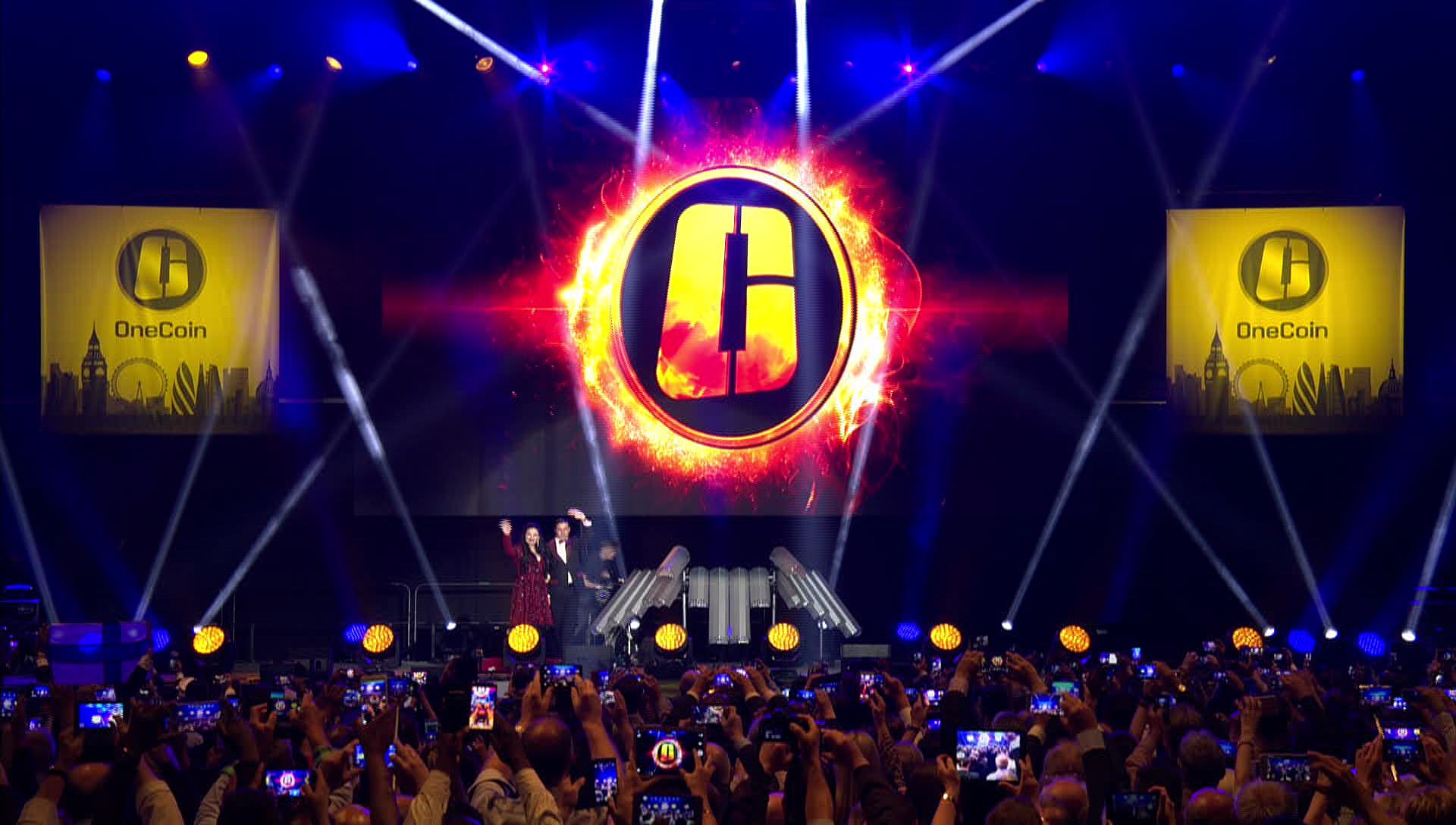
The biggest cryptocurrency scams in history (Part 1) — OneCoin
2020-07-15 | CryptoCurrency.org
In June 2016 a businesswoman called Dr Ruja Ignatova walked on stage at Wembley Arena in front of thousands of adoring fans and told them that she had launched OneCoin, which was on its way to become the biggest and most commonly used crypto in the world.
OneCoin is probably the one that rules them all — at least as far as cryptocurrency scams go. Dr. Ruja “Cryptoqueen” Ignatova took advantage of Bitcoin going mainstream in 2014 and scammed millions out of people. She told people she had invented a cryptocurrency to rival Bitcoin, and persuaded them to invest billions. Then, in 2017, she disappeared.

What is / was OneCoin?
In early June 2016 a 36-year-old businesswoman called Dr Ruja Ignatova walked on stage at Wembley Arena in front of thousands of adoring fans and told them that she had launched OneCoin, which was on its way to become the biggest and most commonly used crypto in the world. It claimed to work like any other cryptocurrency whose coins are generated through mining and can then be used to make global payments. The coin also came with a cryptocurrency wallet and it’s estimated that a total of 120 billion coins would be available on the OneCoin network. In hindsight, it is clear that the OneCoin team used Bitcoin and cryptocurrency as buzzwords, while having close to zero knowledge of blockchain. But, before you judge anybody that has fallen for their ruse, bear in mind that Dr. Ruja was an equivalent of a perfection: fluent in several languages, Ph.D. degree granted in Oxford university, appeared on several magazine covers including Bulgarian Forbes, Financial IT and most notably with incredible charisma. Whoever tried to call OneCoin out was destroyed by charismatic speakers and blind believers, receiving labels like haters and jealous.
How it (didn’t) work
Coins were obtained through mining, and OneCoin operated as a centralized network — the explainer video on their YouTube channel claims it was a safe “platform for innovation that will change the financial system.” It was also claimed that the cryptocurrency adhered to Know-Your-Customer (KYC) rules to prevent money laundering.
People could choose between several education packages that cost between €110 and €188,000. Each package includes “tokens” which can be assigned to “mine” OneCoins. The only means to sell the tokens were the internal exchange that was for users that bought more than just a starter package — however, this exchange didn’t exist. People were able to trade the tokens for euros with OneCoin company, not with the users, so it was clearly a ponzi-scheme program, The only profit for members is coming from inviting others and getting a commission from it.
Cryptocurrency — no blockchain needed?
OneCoin was promoted as a Bitcoin-killer revolution, but it was never a cryptocurrency — it had no public and no private blockchain behind it. All there was a centralized database of people and the tokens that victims were acquiring by buying packages. OneCoins weren’t actually mined using computer resources. Their worth was actually stipulated by the fraudsters, who “programmed” the coin to increase from €0.50 ($0.56) to approximately €29.95 ($33.68) — so, the best and kindest way to put it is that OneCoin was no more than a multi-level marketing network.
(https://twitter.com/CityPoliceFraud/status/1191657250089246721)
It’s all downhill from here
Ignatova, the “face” of this MLM fraud, has disappeared, of course. Dr Ruja identified several of society’s weak spots and exploited them. She knew there would be enough people either desperate or greedy enough and she correctly guessed that by the time the police and media realised it, she’d be gone, along with the money. However, her brother pleaded guilty to money laundering and fraud charges and is now facing a maximum of 90 years behind bars. Konstantin Ignatov, who was arrested at Los Angeles International Airport in March, signed a plea deal on October 4, admitting to his role in the multi-billion dollar cryptocurrency scam. Mark Scott, a former US lawyer, who allegedly made $50 million from re-routing $400 million from the scam, was found guilty of money laundering and fraud and is now facing a possible 50-year prison sentence. His lawyers maintain that he was unaware that OneCoin’s cryptocurrency was worthless, and claim he was simply following Ignatova’s orders. These claims were rejected by a federal jury in Manhattan, following a three-week trial. It’s hard to know how much money has been put into OneCoin. Documents leaked to the BBC say €4bn between August 2014 and March 2017. I’ve also been told by more than one person that it could be as much as €15bn.
The fact that OneCoin was operating internationally also created difficulties for the authorities. In August 2019, the City of London police ended a two-year investigation into OneCoin.
“The companies and individuals behind OneCoin are based outside UK jurisdiction,” their press release said. “We’ve been unable to identify UK-based assets, which could be used to compensate UK investors. There was insufficient evidence to support criminal proceedings against individuals based in the UK, though the force has never specified that there had been no concerns surrounding OneCoin. The force has provided assistance to foreign law enforcement partners in respect of their investigations concerning OneCoin personnel and will continue to do this. If you believe you have been a victim of fraud in relation to OneCoin or you suspect someone of actively marketing OneCoin, please come forward and report it to Action Fraud online.”
Enjoy reading? Please share:
Get the latest crypto news, updates and reports by subscribing to our free newsletter!






